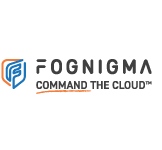Thanks to COVID-19, most businesses are sharing sensitive company data, communicating with one another, and collaborating on projects virtually. Although the internet provides a great space for businesses to stay connected while most users are working from their homes. There is a downfall to this virtual connectivity – network attacks. The PwC Global Economic Crime and Fraud Survey 2020 states that, the average number of frauds per company reported is about 6, which comes out to equal billions of US dollars lost because of these crimes. With so many threats and so much at stake, even the best network security teams cannot keep up. Companies should be following these measures to protect their business against the multitude of cyber-security dangers.
Maintain Software
One of the easiest, but most effective, solutions for network security is to update current antivirus software. Its imperative software updates are installed immediately as they become available. However, although valuable, this one single solution is not enough, especially since today’s threats are more sophisticated than ever.
Make Visibility A Priority
Most organizations think of their network security as a force repelling incoming enemies, and fail to realize that the people inside their walls are the biggest threat. According to Security Intelligence, 75% of security breaches come from insider threats. Most of these cases being unintentional but how can companies prevent insider threats? By monitoring their user’s activity within their network and restricting access to certain websites. By tracking what your users are doing, companies become aware of the situations and can see what actions happened that may have compromised their companies’ network.
Restrict User Permissions
While most insider threats are accidental, the intentional ones are the ones that cause the most damage. Most insider threats are from upset or former employees who leak/steal sensitive company information. Although it is common for most businesses to restrict access for each employee, giving users access to everything is a huge security risk. To keep your company and employees safe, employees should only have access to the resources they need to perform their job. Furthermore, organizations need to realize the malicious risks associated with employees using their own devices for work purposes. By using company-provided devices you are in control of what is on it and the accesses employees have.
Establish A Security Policy
Just by setting clear expectations and guidelines for your users can make the biggest difference. To be proactive and see where your policies fall short, perform a security risk analysis, and make adjustments where needed. To ensure employees are contributing to your network security, provide on-going security training. Its also beneficial to have a security expert on-staff, for users to reach out to when further clarification or assistance is needed.
Backup Your Data
A benefit of digital information, is that copies can easily be made. This allows organizations to copy their data information and store it in a separate, secure location off their network. This gives organizations something to refer to in case of a cyber-attack. It is important to regularly backup your data, so one data breach doesn’t ruin your entire organization.
Third Parties Are Just As Dangerous
If internal users represent such a huge part of data breaches, then third parties are just as dangerous. When organizations work with third parties, they need to access company information somehow. Giving them network access will create more entry points which creates more entry points available for malicious attacks. It is important to evaluate the third parties you are working with carefully and restrict their access as much as possible.

Education Is Key
Organizations can have a solid security strategy in place, but if their employees are not complying, your network will always be vulnerable. Securing your data and the users using the data should be a top priority. Train your employees on how to recognize and report threats, what to do to prevent them, and using/accessing data according to your company’s policy. Educating your users on how to protect your network is a huge step towards company cyber safety.
Be Prepared
You never really know when a threat is going to happen, so being prepared for the worst is crucial. Organizations must constantly monitor their networks for threats, analyze and fix the threats that do come through, and stay-up-date on cybersecurity best practices and trends.
Fognigma’s Network Solutions
Fognigma provides a variety of software and hardware solutions, that allows enterprises to completely secure their network connections. All solutions are wrapped in FIPS 140-2 validated, cascading AES-256 encryption. Fognigma’s network solutions include:
Fognigma VPN: A specialized VPN built providing streamlined, user-friendly access to private collaboration services, traceless Internet access, and discreet communications.
Wicket: A portable misattribution device that connects to a Fognigma Network and protects single users and small groups, as well as IoT and other network-enabled devices.
Gateway: A misattribution device for a headquarters environment or other facility, which provides multiple users access to multiple Fognigma Networks, over a hidden, protected network connection.
